Vought F-4U Corsair replica (VMF-124 Black Sheep) at Parafield Pt 2
This is the actual aircraft 2nd Lt Bennett flew when he fatally crashed during a training mission, as told in Pt 1. Among the few parts that still is possible to tell what it once was is the gull wing main spar in the first photo. Rest is a mangled up fuselage and lots of small bits.
Some may have read something regarding a "salmon" coloured primer, I think we have a major case of this here if we take a look into the fuselage.
The Classic Jet Fighter Museum doesn´t seem to be totally sure what to do with the wreck once the replica is done. Will it stay with the replica or will it be sold off as parts or a whole aircraft wreck? I can proudly say that a few dollars of mine went to the funding of the replica by buying a small piece of the wreck, hope at least some rivets are payed for by this.
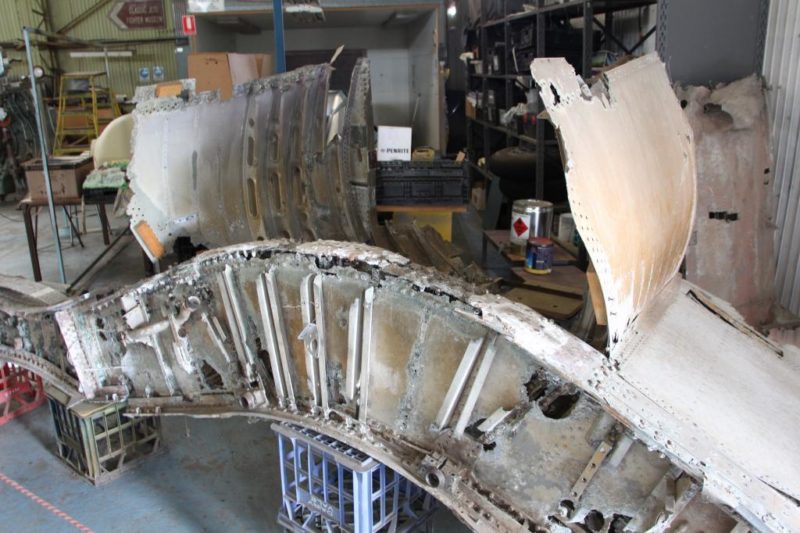
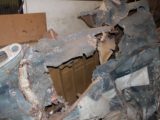
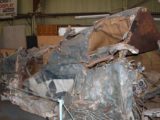
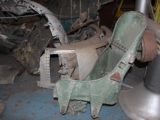
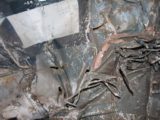
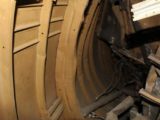
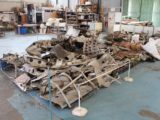
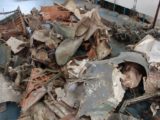
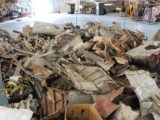
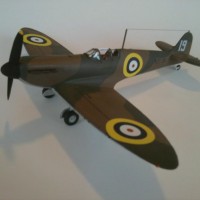
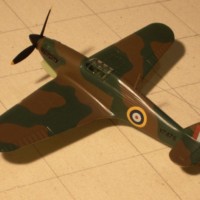
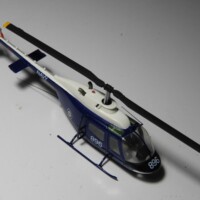
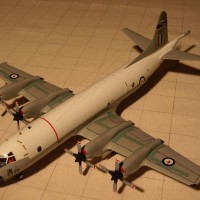
I'm certainly no restoration expert (or any other 'expert' for that matter), but it would look to the average Joe that there isn't enough recognizable pieces left to 'restore' that particular wreckage. There may be a few parts & pieces to salvage/save for a later project, but it appears this one is simply a pile of scrap metal. But what do I know?
Lots of corrosion on this airframe, Craig. Main spar and other bits are quite flaky and got big holes due to aluminium being corroded. Not sure this chemical process can be stopped. Maybe a few bits can be straightened out, like the seat, but as you can see it´s in a sorry state all in all.
I've seen similar wrecks being used for restorations or replica's. Usually, you can figure out the thickness of sheet metal or use some of the parts to create patterns for new parts. I've seen seats just like the one pictured where the sheet metal worker, machinist and magician was able to figure the dimensions of the original. Use the proper sheet metal thickness etc to fabricate a copy. Yeah, the plane looks horrific imagine what it did to the pilot.
Yes, you are right. There is a Swedish P-51 Mustang (J 26) that has been restored fully after being found in a swamp, all shot up. A few bits and pieces had to be manufactured or replaced by original Mustang parts. It is amazing what some people can do with fairly bad objects. However, the Corsair will hardly ever become anything else than what it is today. But who knows...
Check out http://lae.blogg.se/2009/may/s-26-mustang-ateruppstar.html for article regarding restoration of Swedish Mustang.
Hey Stellan!
Magnificent footage that is.
I contemplated about salmon primer myself some time ago:
http://imodeler.com/2014/07/f4u-1-salmon-vs-zinc-chromate-primer/
Comparing the more brownish colour in your pictures with the reddish Lake Michigan discovery, do you think the Bennet aircraft was exposed to factors that bleached it?
I read that the salmon colour was achieved by mixing some red pigment to zinc-chromate, so it may be that the pigments lost their original tone here.
Thanks, Halvar! Fresh water, like in Lake Michigan, could possibly have conserved the colours due to less direct sunlight and oxygen. Also low temperatures in water compared to tropical conditions may have conserved the paint. Or...can these conditions alter the paint as well but in some other direction? Hmm... If doing an image search one get a few interesting discussions regarding this primer and its true shade.
Your theory about bleaching effects sounds quite convincing to me. Here's another one ...
I made up my mind about all this when I did my Corsairs and came to the following conclusions these days, but only remembered them today. I have no trace of an historical evidence for this theory, I just find it kind of logical.
The colour of zinc-chromate is the result of a chemical reaction. There is obviously nothing like an aestethical will behind it, it's simply as it is and you use it as it avoids corrosion. So why on earth would you give it another colour? As can be seen in the Lake Michigan pictures they put the salmon red primer on top of the zink-chromate. What I think is: they had decided to use two layers of zink-chromate, maybe because they found that a good idea for the Pacific theatre and carrier use. And what would you do to make sure that you don't miss any area with the second coat having the same colour than the first? You mix some pigment in that creates a maximum of contrast. And that's, I guess, what they did. If this is true, it doesn't really matter whether you use a bit more or less of the red pigment. As long as the contrast is strong enough that you can make sure to cover every area twice, all is fine. This theory would also end discussions about "the right" tone because there is none. There could be hundreds of different ones depending on the amount of pigment the painter decided to use that very day.
I think you got a valid point here, Halvar. I´m not sure I have read any on this regarding any other aircraft or other time. Was the Corsair really the only one type to receive this treatment? Pacific use only? What about Wildcat, Hellcat, Dauntless etc? Or was it Vought/Brewster/Goodyear´s idea to have a different colour for a last coat of protective paint (for a brief period only?)? If so, did all producers of naval aircraft in America add an extra layer but used same zinc chromate yellow green as the first one?
The exact shade of pink/red brown may never be fully known unless someone can recreate the mix. And anyhow, it will always depend on too many factors for us to replicate it "true" on a model.
And the Salmon Pink description maybe should read Primer Red if this was the original shade before local conditions broke it down to a pinkish shade... What if there is no mystery to the paint at all but they used normal primer red brown paint for extra protection?
And now we're right into it, Stellan! 🙂
However it may be, it's just cool to have things like salmon primer, pink seals, turquoise cockpits, ...
Thanks
My pleasure.